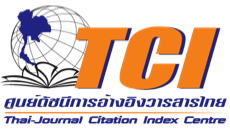ความสัมพันธ์ระหว่างคุณภาพความสัมพันธ์ของครูกับนักเรียน และการเห็นคุณค่าในตนเอง ของนักเรียนชั้นประถมศึกษาปีที่ 3 และ 6 กรณีศึกษาโรงเรียนราชวินิต (Relationship between the Qualities of Teacher-student Relationships and the Student’s Self-esteem in Third and Sixth Graders : A Case Study of Rachawinit School)
คำสำคัญ:
ความสัมพันธ์ของครูกับนักเรียน, การเห็นคุณค่าในตนเอง, นักเรียนระดับชั้นประถมศึกษาบทคัดย่อ
การวิจัยนี้มีวัตถุประสงค์เพื่อศึกษาความสัมพันธ์ระหว่างคุณภาพความสัมพันธ์ครูกับนักเรียน กับการเห็นคุณค่าในตนเอง ในนักเรียนระดับชั้น ป.3 และ 6 โรงเรียนราชวินิต กลุ่มตัวอย่าง ได้แก่ นักเรียนโรงเรียนราชวินิต ป.3 จำนวน 178 คน และนักเรียน ป.6 จำนวน 253 คน ปีการศึกษา 2562 ใช้แบบสอบถามเกี่ยวกับการเห็นคุณค่าในตนเอง และแบบสอบถามเกี่ยวกับความสัมพันธ์ระหว่างครูกับนักเรียน ในการเก็บรวบรวมข้อมูล ใช้ค่าความถี่ ค่าร้อยละ ค่าเฉลี่ย ค่าส่วนเบี่ยงเบนมาตรฐาน การวิเคราะห์สหสัมพันธ์ และการวิเคราะห์ถดถอยแบบลำดับขั้น ในการวิเคราะห์ข้อมูล ผลการศึกษาพบว่า คุณภาพความสัมพันธ์ระหว่างครูกับนักเรียนด้านความขัดแย้ง สัมพันธ์ทางลบและทำนายการเห็นคุณค่าในตนเองด้านโรงเรียนและการศึกษาทางลบได้ สัมพันธ์ทางลบและทำนายการเห็นคุณค่าในตนเองด้านครอบครัวและผู้ปกครองทางลบได้ คุณภาพความสัมพันธ์ระหว่างครูกับนักเรียนด้านการพึ่งพิง สัมพันธ์ทางบวกและทำนายการเห็นคุณค่าในตนเองด้านตนเองโดยทั่วไปทางบวกได้ สัมพันธ์ทางลบแต่ทำนายการเห็นคุณค่าในตนเองด้านครอบครัวและผู้ปกครองไม่ได้ สัมพันธ์ทางลบและทำนายการเห็นคุณค่าในตนเองด้านสังคมและกลุ่มเพื่อนทางลบได้ โดยเพศและระดับชั้น เป็นปัจจัยทางบวกที่ทำนายการเห็นคุณค่าในตนเองด้านสังคมและกลุ่มเพื่อนได้
เอกสารอ้างอิง
2. Alloway, T. P., & Alloway, R. G. (2010). “Investigating the Predictive Roles of Working Memory and IQ in Academic Attainment”. Journal of Experimental Child Psychology 106(1): 20-29.
3. Anupan, W. & Tullayawathana, R. (2016). Document for the 9 teacher professional standards training of the Teachers Council of Thailand academic year 2016 teachership curriculum. Bangkok: Suan Dusit University
4. Brown, J. D., & Marshall, M. A. (2006). “The three faces of self-esteem”. In M. Kernis (Ed), Self-esteem: Issues and answers (pp. 4-9). New York: Psychology Press.
5. Buhs, E. S., Ladd, G. W., & Herald, S. L. (2006). “Peer exclusion and victimization: Processes that mediate the relation between peer group rejection and children's classroom engagement and achievement?”. Journal of Educational Psychology 98(1): 1-13.
6. Chung, J. M. H., Hutteman, R., van Aken, M. A. G., & Denissen, J. J. A. (2017). “High, low, and in between: Self-esteem development from middle childhood to young adulthood”. Journal of Research in Personality. 70: 122-133.
7. Eoseewong, N. (n.d.). Citi in modern Thai society. [Online]. Retrieved August 25, 2019, from
http://www.human.cmu.ac.th/courseonline/huge/050103/pdf/moung1.pdf. (in Thai)
8. Kambhu Na Ayudhaya, P. (2017). Effect of Art Therapy for Groups on Self-esteem of Children Aged Nine to Eleven. Master of Arts Thesis Program in Developmental Psychology Faculty of Psychology Chulalongkorn University. (in Thai)
9. Knox, D., & Schacht, C. (2010). Choices in relationships: An introduction to marriage and the family (10th ed.). Belmont: Wadsworth.
10. Leary, M. R. (2012). “Sociometer theory”. In P. A. M. Van Lange, A. W. Kruglanski, & E. T. Higgins (Eds.), Handbook of theories of social psychology (pp. 151-159). Thousand Oaks, CA, : Sage Publications Ltd.
11. McCormick, M. P., O'Connor, E. E., & Parham Horn, E. (2017). “Can teacher-child relationships alter the effects of early socioeconomic status on achievement in middle childhood?”. Journal of School Psychology 64: 76-92.
12. Muangsamai, P. & Boonnuch, W. (2016). “Inside Thai Society”. In J. Trairat (Ed.), Intercultural Communication (3rd ed., pp. 133-150). Nonthaburi: Sukhothai Thammathirat Open University publisher. (in Thai)
13. Patterson, C. (2008). Child development. New York: McGraw-Hill Higher Education.
14. Pianta, R. C. (2001). Professional manual: Student-teacher relationship scale. Psychological Assessment Resources.
15. Rachawinit School. (2019). Rachawinit school annual report for academic year 2018. Bangkok: Author. (in Thai)
16. Rahmani, P. (2011). “The relationship between self-esteem, achievement goals and academic achievement among the primary school students”. Procedia – Social and Behavioral Sciences 29(1): 803-808.
17. Rathus, S. A. (2008). Childhood and adolescence: Voyages in development (3rd ed.). Belmont, CA: Wadsworth.
18. Rattanaprakarn, C., Likittanasombat, S., & Saengsiripongpun, Y. (2016). Relationships among self-esteem, parent attachment, peer attachment, and life satisfaction in Thai undergraduates. Bachelor of Science in Psychological Science Faculty of psychology Chulalongkorn university.
19. Rentzsch, K., Wenzler, M. P., & Schütz, A. (2016). “The structure of multidimensional self-esteem across age and gender”. Personality and Individual Differences 88: 139-147.
20. Rithakananone, P. (2007). Human Development. Bangkok: Chulalongkorn University Publisher.
21. Sabol, T. J., & Pianta, R. C. (2012). “Recent trends in research on teacher-child relationships”. Attachment and Human Development 14(3): 213-231.
22. Serdiouk, M., Berry, D., & Gest, S. D. (2016). “Teacher-child relationships and friendships and peer victimization across the school year”. Journal of Applied Developmental Psychology 46: 63-72.
23. Shaffer, D. R., & Kipp, K. (2010). Developmental psychology: Childhood and adolescence (8th ed.). Belmont, CA: Wadsworth, Cengage Learning.
24. Srisuwan, S. (2014). The Ralationships between Teacher-child Relationship and Prosocial Behavior of Preschoolers. Master of Education Thesis Program in Early Childhood Education Faculty of Education Chulalongkorn University. (in Thai)
25. Thanasetkorn, P. (2008). Student-Teacher Relationship Scale. Unpublished manuscript, National Institute for Child and Family Development Mahidol University. (in Thai)
26. Tripathi, S., Chiangthong, S., Salachan, S., Srisuwan, T., & Sutthichee, L. (2010). Report summary about discussion on life assets creating for the crisis of children and youth solving in Thailand. Pathum Thani: Ruamtaweepolkarnpim. (in Thai)
27. Tsaousis, I. (2016). “The relationship of self-esteem to bullying perpetration and peer victimization among schoolchildren and adolescents: A meta-analytic review”. Aggression and Violent Behavior 31: 186-199.
28. Vandenbroucke, L., Verschueren, K., Desoete, A., Aunio, P., Ghesquière, P., & Baeyens, D. (2018). “Crossing the bridge to elementary school: The development of working memory components in relation to the teacher-student relationship and academic and behavioral functioning”. Early Childhood Research Quarterly 42: 1-10.
29. Varghese, C., Vernon-Feagans, L., & Bratsch-Hines, M. (2019). “Associations between teacher-child relationships, children’s literacy achievement, and social competencies for struggling and non-struggling readers in early elementary school”. Early Childhood Research Quarterly 47: 124-133.
30. Verschueren, K., & Koomen, H. M. Y. (2012). “Teacher–child relationships from an attachment Perspective”. Attachment & Human Development 14(3): 205-211.
31. Wachirapraditporn, O. (2012). Causes of juvenile delinquency and proactive corrective measures. [Online]. Retrieved July 14, 2019, from http://www.library.coj.go.th/Openmedia/index?f=../file_upload/module/manage_digital_file/digital_file/7a5a4e3a.pdf. (in Thai)





